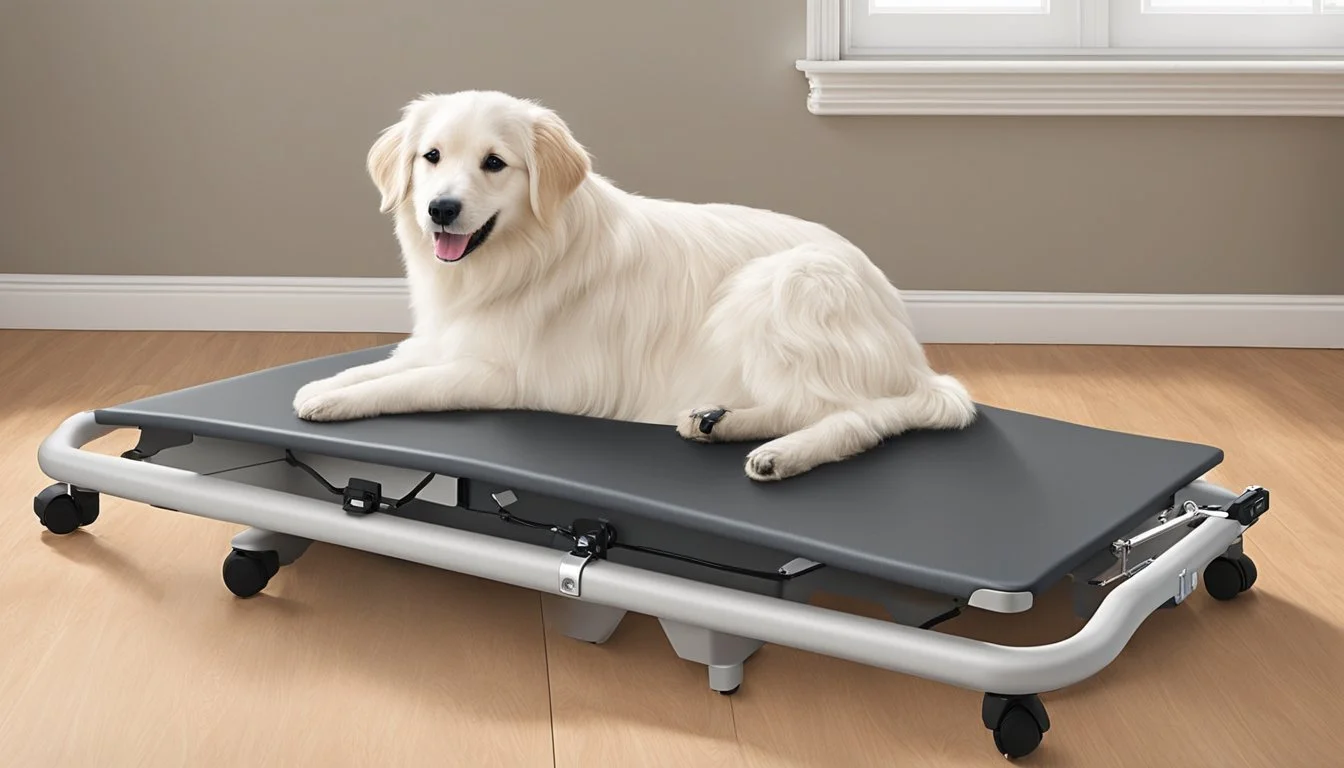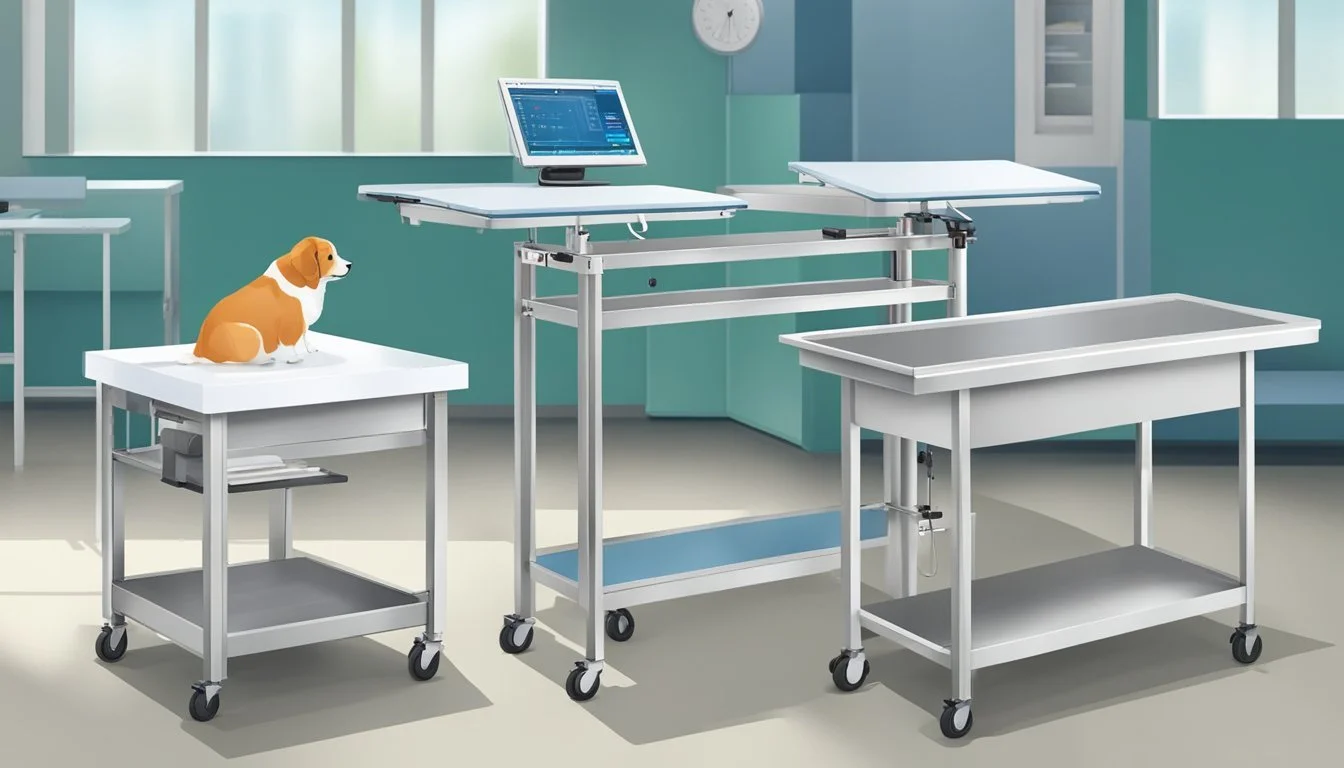The Ultimate Guide to Portable Veterinary Tables
Selecting the Perfect Model for Small Animal Medical Procedures
In the realm of small animal practice, efficiency and adaptability are paramount, and portable veterinary tables have become indispensable tools. The versatility of modern portable tables allows for a smooth transition from examination to medical procedure, catering to the dynamic nature of veterinary practice. Designed with ergonomics in mind, these tables not only facilitate the well-being and comfort of the animals but also help prevent musculoskeletal stress on veterinary staff during prolonged surgical procedures.
Durability and stability are critical features of portable veterinary tables, which ensure the safety of the animals during treatment. The ability to adjust height and position with precision can make a significant difference in the accessibility and ease of various medical processes. With advancements in technology, some portable tables now incorporate electric lift and tilt functions that enhance maneuverability, enabling veterinarians to position patients appropriately for a range of procedures.
As veterinary practices continually strive to improve small animal care, the integration of portable veterinary tables highlights the industry's commitment to delivering high-quality medical attention in an increasingly mobile and flexible manner. These tables, often equipped with features such as Bluetooth connectivity and access to veterinary imaging platforms like Clarius Cloud, underscore the progression of veterinary tools towards smarter, more connected solutions that support diagnostic and surgical precision.
Choosing the Right Portable Veterinary Table
In any veterinary practice, having the right equipment is essential for efficient and safe animal care. Selecting an appropriate portable veterinary table is crucial for both the clinic's functionality and the welfare of the animals during medical procedures.
Types of Portable Tables
Portable veterinary tables come in various types to match different medical and surgical needs within a practice. Some common types are:
Hydraulic Elevator Tables: Well-suited for practices that need versatility and fine-tuning in height adjustments.
Electric Lift Tables: Offer a quiet and smooth height adjustment, ideal for reducing stress for patients and the veterinary team.
Fold-Up Wall Mount Tables: Save space and can be easily moved and stored, perfect for clinics with limited space.
Key Features to Consider
When choosing a portable veterinary table, one must look at specific features critically:
Ergonomic Design: Ensures comfort and reduces the probability of injury for the veterinary staff during procedures.
Adjustability: Look for tables that offer height adjustments to cater to different scenarios and staff members.
Mobility: Wheels or casters should be sturdy and lockable, enabling smooth movement and firm positioning when needed.
Materials and Durability
The material of a portable veterinary table affects its longevity, stability, and ease of cleaning. Common materials include:
Stainless Steel: Offers high durability and resistance to corrosion, making it a popular choice.
Composite Materials: These may offer benefits such as reduced weight and cost, while still providing reasonable durability.
Selecting durable, high-quality materials ensures the table withstands the demands of daily veterinary practice and maintains a hygienic environment for all medical procedures.
Benefits of Using Portable Veterinary Tables
Portable veterinary tables offer significant advantages in small animal medical procedures. They are designed to enhance the efficiency of veterinary practices while providing comfort and safety to the patients.
Mobility and Flexibility
Portable veterinary tables are equipped with features such as lightweight construction and wheels, which allow for easy movement between clinic rooms or within a designated treatment area. This mobility ensures that the veterinary staff can swiftly reconfigure the setup for different procedures or relocate the table to accommodate the varying needs of the practice.
Space Optimization
By utilizing portable veterinary tables, clinics can make the most of limited space. The ability to fold and store these tables when not in use maximizes room availability. This space-saving quality is particularly beneficial for small clinics or practices where room for equipment is at a premium.
Improved Patient Accessibility
With adjustable heights and tilt functions, portable veterinary tables provide improved access to patients. This accessibility is crucial for treating smaller animals or those that have difficulty climbing onto fixed-height tables. The ease of patient placement on the table minimizes stress for the animal and reduces the risk of injury to both the patient and the veterinary staff.
Setting Up Your Portable Veterinary Table
When preparing a portable veterinary table for small animal medical procedures, attention to detail and a methodical approach ensure the safety and efficiency of the process. This section outlines the steps and considerations for both pre-procedure setup and the ergonomic comfort of the practitioner, which are essential for successful outcomes.
Pre-Procedure Setup
Inspection of Parts: Prior to any procedure, one should inspect the portable table for any loose or damaged components, which includes the tabletop, hinges, and adjustable parts.
Cleaning: The table should be thoroughly cleaned and disinfected to maintain a sterile environment for veterinary medicine applications.
Accessories: Equip the table with necessary accessories such as restraining devices or IV poles. These should be attached securely and positioned for easy access.
Service Check: Ensure the table’s mechanisms, like the hydraulic or electric lifts, are functioning properly. Routine service checks can preempt equipment failure.
Ergonomics and Practitioner Comfort
Adjustable Height: The table should be adjusted to a comfortable height to prevent strain on the practitioner's back and facilitate access to the patient. Height adjustability ranges typically from 690mm to 1090mm.
Tilt Functionality: For procedures requiring different angles, the tilt function, up to 33° in some models, allows for better patient positioning without compromising the practitioner's posture.
Mobility: The presence of wheels or casters should be checked for ease of movement, assuring that the table can be smoothly transported to wherever it is needed. Wheels should lock securely during the procedure.
Essential Procedures and Equipment Handling
In veterinary medicine, precise handling of equipment is critical during essential procedures to ensure the safety and efficacy of treatment. This section details practical guidelines on several core procedures performed on portable veterinary tables.
Endotracheal Intubation Procedures
Endotracheal intubation is a vital procedure performed to maintain an open airway during anesthesia. Adequate preparation of all necessary equipment, including the endotracheal tube, laryngoscope, and ties, should be ensured prior to initiation. The BSAVA Guide to Procedures outlines step-by-step instructions, emphasizing the importance of selecting the correct tube size and careful monitoring of the patient's vital signs throughout the procedure.
Cystostomy Tube Placement
Cystostomy tube placement is a therapeutic procedure that allows direct urinary bladder drainage. It requires sterility and precision—starting from the draping of the patient to the surgical incision on the bladder. Each step, from preparing the surgical site to positioning the animal on the table, should adhere to the protocols outlined in the BSAVA Guide to Procedures in Small Animal Practice.
Use of Point-of-Care Ultrasound (POCUS)
The use of point-of-care ultrasound (POCUS) has become an indispensable diagnostic tool in small animal practice. Its immediacy permits rapid assessment and assists in guiding certain therapeutic procedures on the spot. Proper calibration and handling of the ultrasound machine are critical, and veterinary professionals should be trained to interpret real-time images accurately.
Wet-to-Dry Dressings Application
This therapeutic procedure involves applying a moist dressing that dries over time and assists in debriding a wound. Correct preparation includes sterilizing all tools and ensuring that the dressing materials, such as gauze and saline, are ready. Attentiveness to the frequency of dressing change is crucial to prevent infection and promote healing.
Using portable veterinary tables efficiently for these essential procedures requires impeccable coordination of equipment and an adherence to best practices, facilitating successful outcomes in small animal care.
Maintaining and Cleaning the Portable Table
Proper maintenance and cleanliness of portable veterinary tables are vital for ensuring longevity and providing safe, hygienic services within a practice. These procedures directly affect the table's usability and the quality of service provided to patients.
Regular Maintenance
Schedule:
Daily: Check for loose screws or worn parts
Monthly: Inspect folding mechanisms and locks for wear and tear
Table Surface:
Surface Integrity: Regularly examine for any cracks or damage that may harbor pathogens.
Moving Parts:
Lubrication: Apply appropriate lubricants to hinges and wheels to ensure smooth operation.
Storage:
When Not in Use: Store the table in a dry, clean area to prevent corrosion and damage.
Cleaning Protocols
After Each Use:
Disinfection:
Use a veterinary-grade disinfectant
Wipe down all surfaces thoroughly
Deep Cleaning:
Weekly: Perform a deep clean to address any build-up of residues.
Materials:
Approved Cleaners: Utilize cleaners that are non-corrosive to preserve the integrity of the table's materials.
Technique:
No Sharp Tools: Avoid using abrasive tools that may scratch the surface and allow for bacteria accumulation.
Drying:
Complete Drying: Ensure the table is completely dry before storing or reusing to prevent the spread of bacteria and the development of mold.
By adhering to these maintenance and cleaning protocols, veterinary practices can ensure their portable tables remain in prime condition, providing a reliable surface for performing medical procedures on small animals.
Supplementary Resources
Incorporating high-quality supplementary resources can enhance a practitioner's understanding and application of portable veterinary tables for small animal medical procedures. These resources often include detailed visuals and exclusive member access to professional veterinary guides.
Educational Videos and Illustrations
Practitioners should seek out educational videos that demonstrate the correct use and maintenance of portable veterinary tables. These videos often provide step-by-step instructions on setup, adjustment, and ergonomic usage during procedures. Illustrations, particularly those showcasing the anatomy of different animal positions on the tables, can complement the video material and reinforce best practices.
BSAVA Guides and Member Access
The British Small Animal Veterinary Association (BSAVA) offers a wealth of resources for veterinary professionals. Their BSAVA guides cover a broad range of topics that include the use of medical equipment, such as portable veterinary tables. BSAVA members receive additional benefits, including access to the latest guides and updates in veterinary medicine, which can be crucial for staying informed about the most effective techniques for small animal medical procedures.
Conclusion
Portable veterinary tables are an essential investment for small animal medical procedures. They provide ergonomic support for animals and staff, enhancing productivity and minimizing the risk of injuries. Here are key takeaways:
Durability and Stability: High-quality stainless steel construction ensures long-term use.
Ergonomic Design: Adjustable height and tilts adapt to various procedures, safeguarding against fatigue.
Investment and Value: Though costs vary, a reliable table justifies the expense through durability and functionality.
These tables leverage advancements in veterinary medicine, facilitating complex surgeries with greater ease. The design of each table should prioritize strength, stability, and comfort for small animals — vital for successful outcomes.
When making a purchase, it is advised to:
Check for adjustable features: Height, tilt, and mobility.
Verify material quality: Preferably corrosion-resistant.
Assess ease of cleaning: To maintain hygiene standards.
In sum, selecting the right table is not just about the immediate benefits. It is about guaranteeing that the veterinary practice can offer the best care for small animals with efficiency and precision for years to come.









